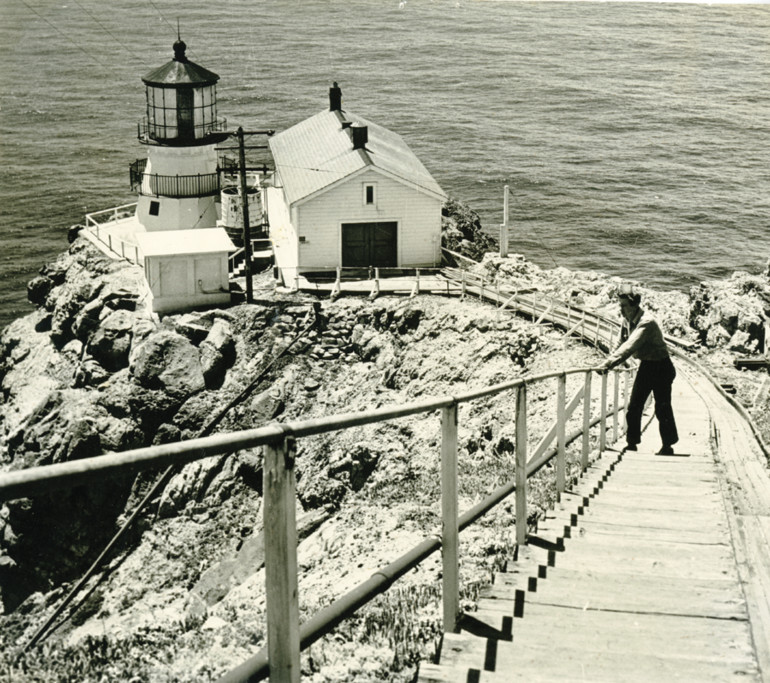IF YOU’VE BEEN out to the Point Reyes Lighthouse you know it’s a long haul. Once you reach Inverness, there’s still a 20-mile drive on a narrow road, then a mile walk, followed by 308 steps (check out the above photo) down to where the lighthouse sits on a ledge 600 feet above the Pacific. But if it’s a trek now, consider what it was like in the late 1860s, when the Point Reyes Light Station, the structure’s official name, was being built.
The 1,032 delicate glass prisms for the lighthouse’s Fresnel (fray-nel) lens, along with the intricate rotating mechanism, were fashioned in France and shipped by steamer around Cape Horn and up to San Francisco.
Then, along with sections of the cast-iron tower, the many packages were sent by sailing ship to West Marin’s Drakes Bay, loaded unto ox-drawn carts, and hauled three miles to the tip of the Point Reyes peninsula. From there, it took crews six weeks to get all the parts down to the ledge where the station was being built (and we moan about 308 steps that take, maybe, 20 minutes).
On December 1, 1870, Point Reyes Light Station first shone forth, 24 miles out to sea.
According to the National Park Service, which now oversees the light station, this was possible because of the 1823 invention of the Fresnel lens, which intensifies a light source by magnifying it through crystal prisms into concentrated beams. The Point Reyes lens, divided into 24 individual panels, cast 24 individual beams radiating out like a giant wagon wheel; rotation of the lens created the lighthouse’s distinctive pattern of one flash every five seconds.
This article originally appeared in the December 2019 print edition of Marin Magazine under the headline “Step Counter”.


